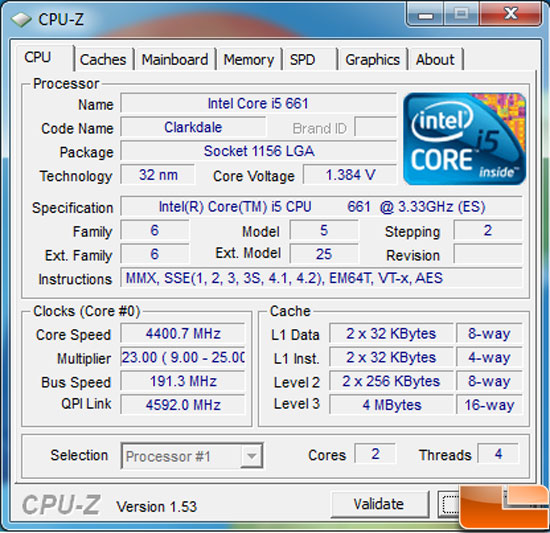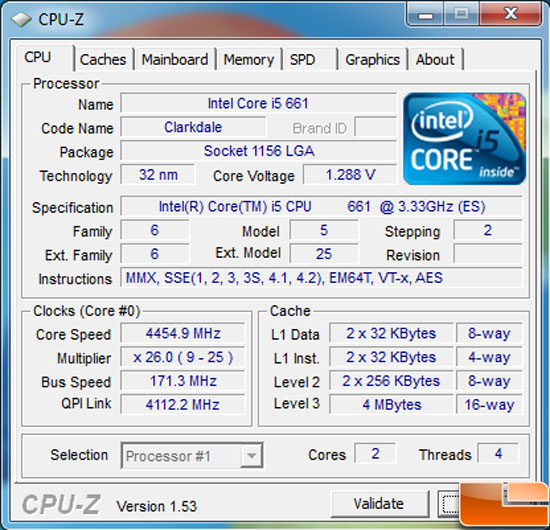Overclocking & Power Consumption
Since the introduction of the Core 2 Duo, Intel processor have been known for reaching some great overclocks. Upping the speed by 1GHz or more is not uncommon. With the shrink to 32nm, we were excited to see how far we could crank the CPU speed up with reasonable voltage.

For overclocking we decided to use the recently reviewed ASUS P7P55D Premium to see how far we could push this new CPU.

After adding in 1.4v to the CPU and 1.2 to the memory controller, we were able to reach a max stable BCLK of 191. We also made use of the ASUS Turbo V software to automate the overclock, and even with 1.4v CPU and 1.4v to the memory controller, we saw lockups passing BCLK of 193.

After finding a good range in the BCLK, we decided to play with the multiplier and see just how high we could reach. With 1.3v dialed in to the CPU, we could run stress tests at 4.45GHz! Going above this speed required pushing 1.45v to the CPU. While it may be possible to run with that much voltage on air cooling in a 24/7 setup, we're not sure we recommend it.
Power Conusmption
For testing power consumption, we took our test system and plugged it into a Seasonic Power Angel. For idle numbers, we allowed the system to idle on the desktop for 15 minutes and took the reading. For load numbers, we measured the peak wattage used by the system while running 3DMark Vantage.

Power consumption is very good for the Core i5-661 processor. We see a drop of about 11W from the i5-750 at idle. Under load it really is no contest, the new 32nm i5-661 with half the cache draws much less power.


